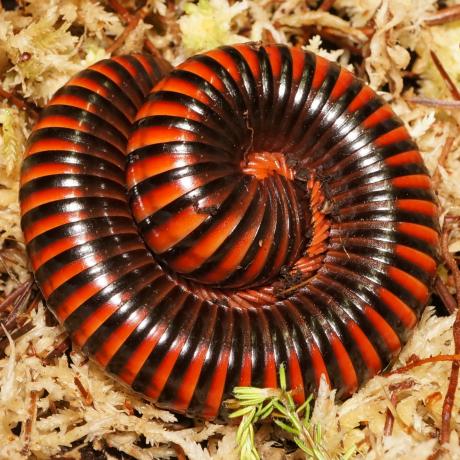

As the name suggests, this is a beautiful species of millipede that is both easy to keep and breed. A must for any serious invertebrate collection.
| Origin | West Africa |
|---|---|
| Environment | Tropical habitats |
| Adult Size | Up to 17cm |
| Suitability | Intermediate |
| Lifespan | Unknown |
| Food Type | Rotting wood, dead leaves, lichen |
A fairly large (up to 17cm) and robust species of millipede with a glossy type appearance. The body is ringed in red and black segments along the dorsal and flanks. This turns entirely black on the venter (underside). The legs and antennae are short, stubby and of cherry red in colouration.
This millipede is similar in appearance to that of Pelmatojulus ligulatus.
They are found in tropical habitats in West Africa, including Cameroon and Nigeria.
House singularly or in groups, in large plastic tanks or glass terrariums. Maintain temperatures between 24°C (75°F) and 28°C (82°F) using appropriate heating equipment. Maintain a high humidity of 80-90% with frequent misting, using a hand or pump sprayer.
Provide a deep substrate layer of 7-10cm which is enriched with organic matter.
This species is a dietary specialist that feeds almost exclusively on rotting wood, dead leaves and lichen. You must provide these at varying levels of decomposition as they can consume vast amounts. Standard foods are rarely accepted.